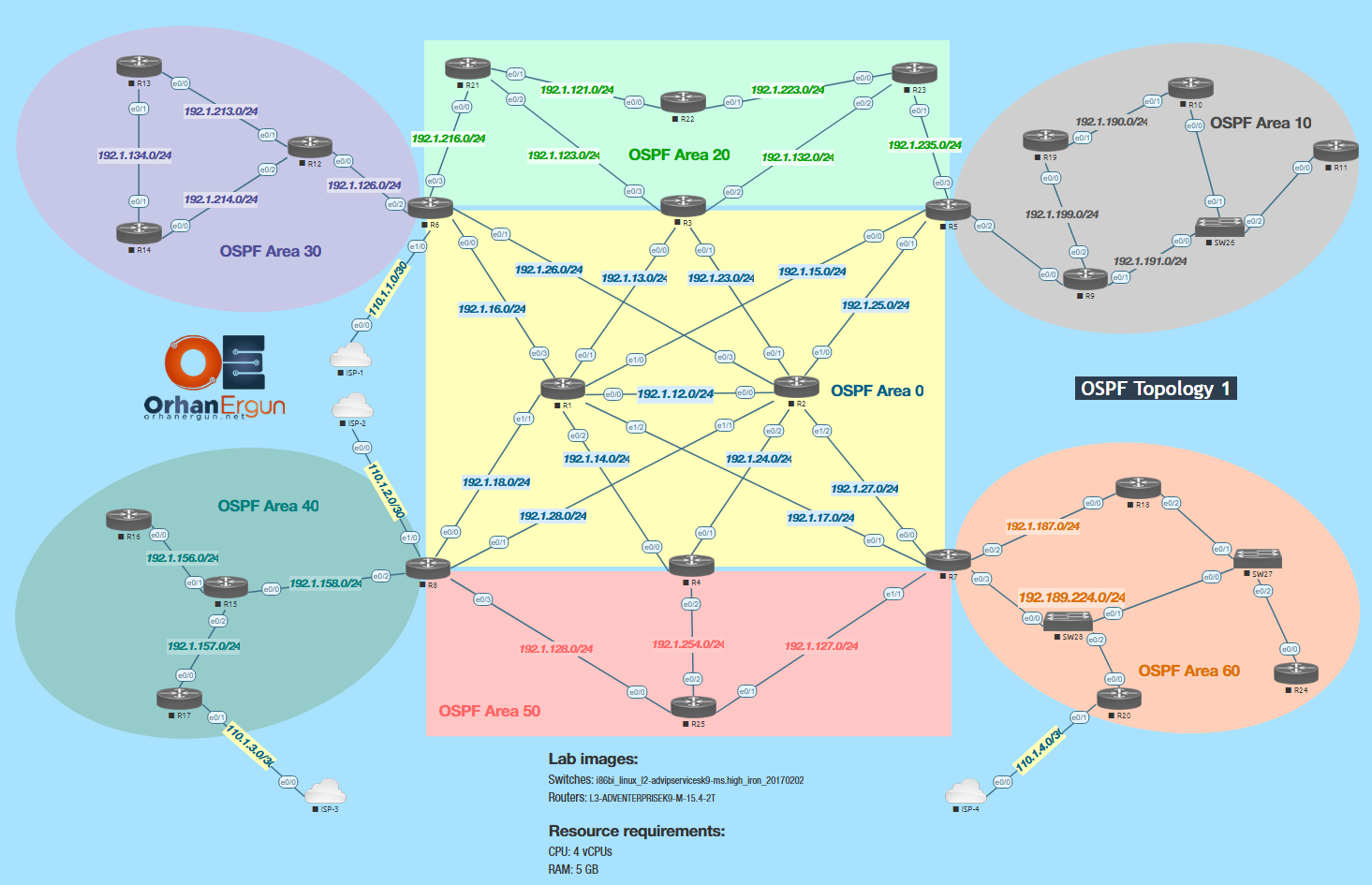
Gain hands-on experience with OSPF in our cutting-edge virtual lab—master route propagation, area design, and advanced configurations to build scalable and efficient networks like a pro! WORKBOOK INCLUDED!
- Category: CCIE Security
Enhance Your IT Skills with OrhanErgun.net Online Training in Networking, Security, and Cloud Technologies.

Gain hands-on experience with OSPF in our cutting-edge virtual lab—master route propagation, area design, and advanced configurations to build scalable and efficient networks like a pro! WORKBOOK INCLUDED!
Our IT rack rental service allows you to access any lab on our website using credits. Here's how it works:
Enjoy flexible and easy access to all our IT labs with our convenient credit system!
OSPF (Open Shortest Path First) is a link-state routing protocol that dynamically calculates the shortest path between routers using Dijkstra’s algorithm. It operates within an autonomous system (AS) and supports hierarchical network design through the use of areas, reducing routing overhead and improving scalability. OSPF exchanges link-state advertisements (LSAs) to maintain a synchronized and loop-free topology. It supports equal-cost multipath (ECMP), fast convergence, and features like authentication, route summarization, and stub areas for optimized performance. OSPF runs directly over IP (protocol number 89) and is widely used in enterprise and service provider networks for its efficiency and flexibility.
You will practice these in this lab:
People also tried these labs:
The default username and password for images used in this
course is as follows, however you will hear new passwords during the course if
the instructor changes the credentials:
|
Image name |
Username |
Password |
|
IOL images |
No username |
No password |
|
CSR1000v |
Admin |
Admin |
|
C8000v |
Admin |
admin |
|
Viptela devices |
Admin |
admin |
|
Windows Server |
Administrator |
Test123 |
|
IOS-XR |
Admin |
Enter new password |
|
Cisco ASA 802 |
no username |
no passwd, hit enter |
|
Cisco ASA 8.4.2,
9.1.5 |
no username |
no passwd, hit enter |
|
Cisco ASAv |
no username |
no passwd, hit enter |
|
Cisco IPS |
cisco |
ciscoips123 |
|
Cisco WSA |
admin |
ironport |
|
Cisco ESA |
admin |
ironport |
|
Cisco WAAS |
admin |
default |
|
Cisco XR9K |
Cisco |
Cisco |
|
Cisco NX9K |
admin |
admin |